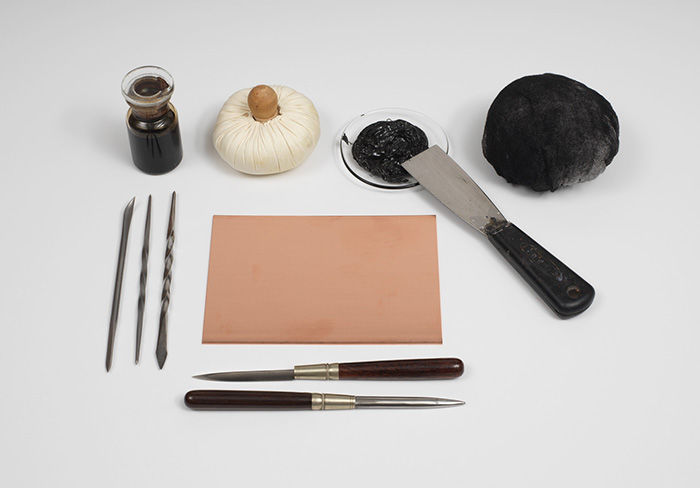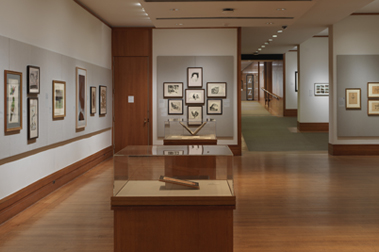Horsley's House at Willesley
Sir Francis Seymour Haden British
Not on view
Seymour Haden was the unlikely combination of a surgeon and an etcher. Although he pursued a very successful medical career, he is mostly remembered for his etched work as well as for his writings on etching. He was one of a group of artists, including James McNeill Whistler (1834–1903) and Alphonse Legros (1837–1911), whose passionate interest in the medium led to the so-called etching revival, a period that lasted well into the twentieth century. The extolling of etching for its inherent spontaneous qualities reached its pinnacle during this time. While the line of the etching needle, Haden wrote, was "free, expressive, full of vivacity," that of the burin was "cold, constrained, uninteresting," and "without identity."
A country home with smoking chimneys seen through trees in backround; a high bank and a man with a hat chopping wood in foreground at right.
"Published State: First.- The three rays have almost disappeared, and are replaced by two almost vertical ones, which are directed from the zenith towards the chimneys of the house, which they nearly reach."
[Source: Harrington, p. 48]
"Haden and his family were frequent guests at Willesley, the country home of his sister Rosamund and her husband John Calcott Horsley, in Cranbrook, Kent.
State II (D1, H1). The three slantin rays and most of the drypoint lines in the sky have been partially removed (they are not visible in some impressions). Two almost vertical lines extend from top of plate towards the chimneys of the house."
[Source: Schneiderman, p. 207]

